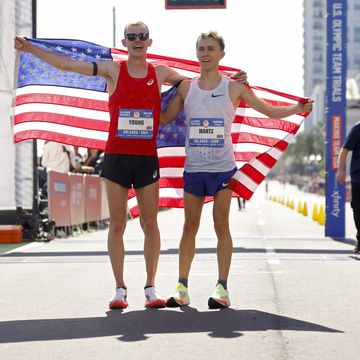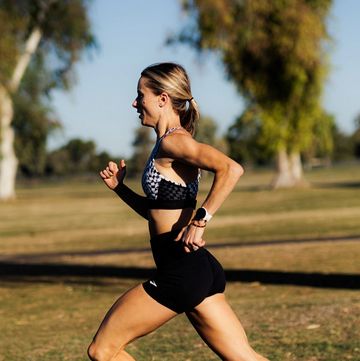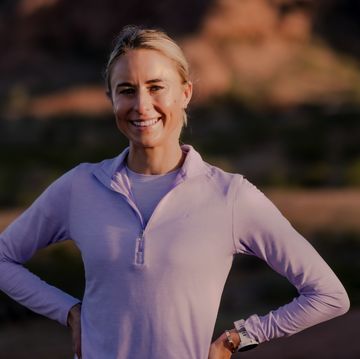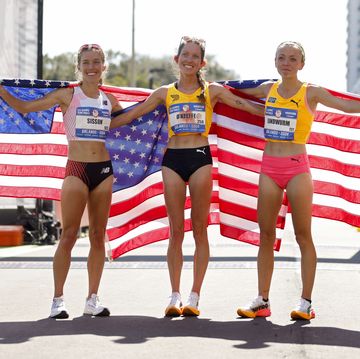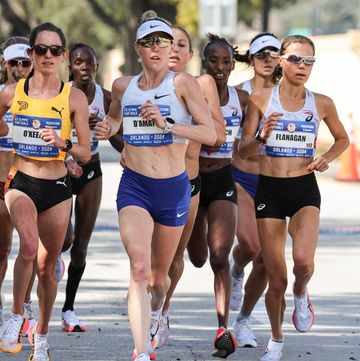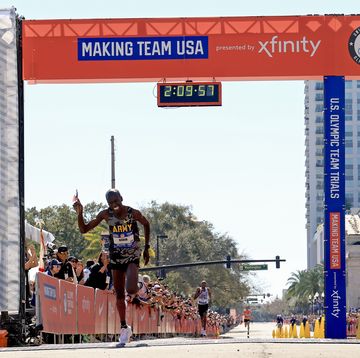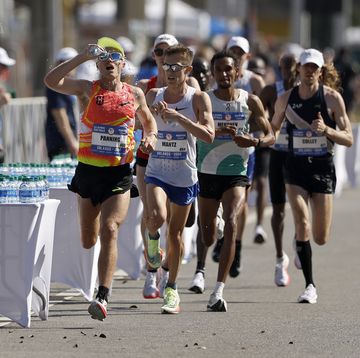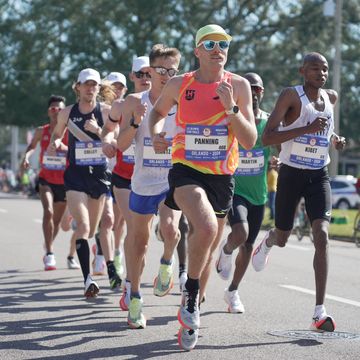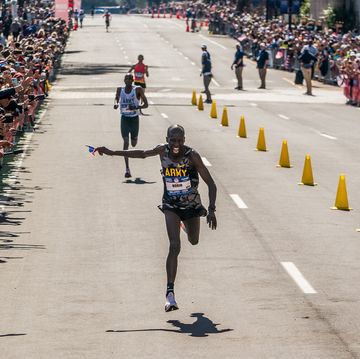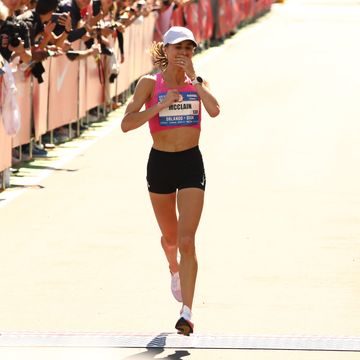In the closing miles of the 2023 Grandma’s Marathon, last June in Duluth, Minnesota, Dot McMahan struggled to calculate how close she was to the Olympic Marathon Trials standard.
“I was just trying to run under 2:37, but you know, math, when you’re running a marathon, isn’t always so good,” she said.
McMahan was more than fine. In her 20th marathon, she ran 2:35:20, smashing the standard and qualifying for her fifth Olympic Marathon Trials.
Her coach, Kevin Hanson, of Hansons-Brooks Distance Project, was ecstatic. And so was her husband, Tim, and their 14-year-old daughter, El, who is also a runner. El told her mom when they FaceTimed after the race that she had run her fastest time since turning 40. “She knew all my stats,” McMahan said. “She was over the moon.”
McMahan, 47, and Des Linden, 40, are thought to be the only female athletes in the field running a fifth marathon trials. McMahan is the oldest women’s qualifier. On the men’s side, Fernando Cabada, 41, has qualified for five marathon trials and is entered in the race. Abdi Abdirahman, a five-time Olympian, is also 47, the oldest in the men’s field.
It was never a given that McMahan would make a fifth trials, especially after USA Track & Field announced in late 2021 the tougher entry standards for the 2024 race. For the 2020 race, held in Atlanta, women had to run 2:45 to make the Trials. This time around, they had to be 8 minutes faster.
“I was very supportive of the fact that they needed to make it quicker, for the women, at least,” she said. “It kind of loses its luster if we make it too easy. That said, I think it was a little harder than I [predicted], which was maybe 2:40, 2:39. So 2:37 was like, woah, okay, we’ve got a real goal here. I never assumed that was going to be a walk in the park.”
McMahan, who was eighth at the Trials in 2008 and ninth in 2012, knows she’s unlikely to finish that close to the front again, unless something unexpected happens in Orlando. While her teammates have moved to Orlando for the month to prepare for potential heat and humidity, McMahan is still training in Rochester Hills, Michigan, where she works as an assistant track coach at nearby Oakland University and has a pet sitting business. (She’s also an online coach with McKirdy Trained.)
And she wants to be home with her family. McMahan’s only warm weather preparations at the moment are the occasional treadmill run. “It’s in a space that we can enclose a little more and turn the heat up,” she said. But simulating humidity “gets a little tricky. You don’t want to grow a bunch of mold in your house.”
That’s typical of the practicality McMahan brings to her training. Her longevity, she says, is a function of doing most of the same hard work she’s always done. She’ll reach 105–110 miles per week at her peak training for a marathon, and she’ll double three or four days per week. She used to run 120.
“I’ve tapered back a little bit, but I’m still doing the majority of it,” she said of the Hansons-Brooks training. “That’s what it takes.” On January 14, McMahan ran the Houston Half Marathon as a tuneup and finished in 1:16:02, averaging 5:48 pace. She was very happy with the result.
Hanson said he and McMahan frequently joke that she’s old enough to be the mother to some of the athletes on the team who are fresh out of college. But he notes McMahan’s durability. She has avoided serious injuries. “That’s what becomes career-ending in your 40s,” he said. “In your late 40s, any injury that sets you back sometimes ends things, because it’s just too hard to get back into it.”
McMahan is practical about other matters, too.
For one, she refuses to dye her hair. “I do have a considerable amount of gray hair,” she said. “I’m not doing anything about it; I’m just going to let it come in.” Plus, she said, her husband has gray hair. They’d look silly together if she dyed her hair and he didn’t. “We’re aging,” she said. “It’s just life.”
She devotes about an hour to getting ready for her morning runs—warming up, doing mobility exercises, and “making sure things are firing.”
When her pace slows on afternoon recovery runs, she doesn’t dwell on it. On December 26, she did a hard 20-miler. The next day, she was tired, and she had 10 miles in the morning, and 4 miles in the afternoon on the schedule. She did those runs, but she ran them slowly—for her.
“I think in the past, I would have beat myself up mentally looking at my watch and being like, ‘You’re running 8-minute pace; this is so ridiculous,’” she said.
Now, she thinks: Are you happy? Are you healthy? Does anything hurt? This is what recovery pace is for you. “I listen to my body, and I don’t get upset thinking it should be a certain pace,” she said. “That’s my concession to age.”

Sarah Lorge Butler is a writer and editor living in Eugene, Oregon, and her stories about the sport, its trends, and fascinating individuals have appeared in Runner’s World since 2005. She is the author of two popular fitness books, Run Your Butt Off! and Walk Your Butt Off!


